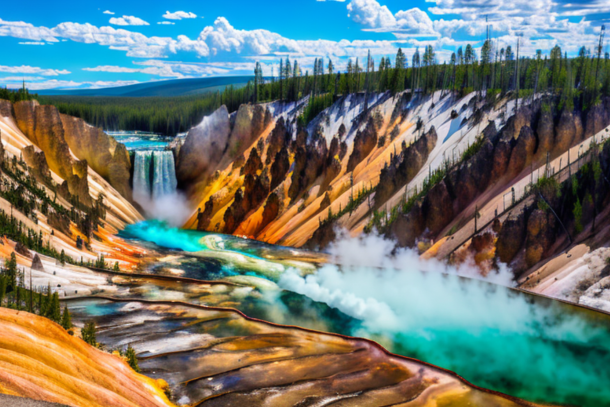What to Pack for a Hike: Your Comprehensive Hiking Packing Guide

Embarking on a hike can be one of the most refreshing and exhilarating ways to experience the beauty of nature. Whether it's a quick amble around a local trail or an ambitious multi-day trek, each venture promises its own unique blend of challenges and rewards. But one aspect remains constant across all types of hikes — the importance of knowing exactly what to pack for a hike.
Getting Ready: Your Hiking Packing Guide
In our journey today, we'll traverse the landscape of hiking essentials, from basic gear to nourishment needs, navigational tools, and much more.
Setting the Course
Preparation is key when it comes to hiking. Packing appropriately ensures you're equipped for unforeseen circumstances, and helps to make your hike safer, more comfortable, and ultimately more enjoyable.
A Sneak Peek Into Our Hiking Backpack
In this article, we'll delve into the essential gear for every hiker, from the right kind of clothing and footwear to the backpack that will hold your survival essentials.
We'll also discuss the crucial aspects of hydration and nutrition on the trail, detailing what food and water supplies you should always have in your pack.
Moreover, we'll investigate the importance of navigational tools to guide you on your journey, and the key elements of a first aid kit and other safety equipment that you must always carry.
For those of you looking for that extra comfort or dash of excitement, we'll be exploring additional items that, while not essential, can certainly enhance your hiking experience.
Finally, we'll help you balance necessity and weight, offering tips on how to pack efficiently, ensuring you carry what you need without being weighed down unnecessarily.
So, whether you're an experienced hiker or planning your first outing, join us as we delve into the art of knowing what to pack for a hike. Your next adventure awaits!
The Essence of Correct Kit: Why Packing Appropriately Matters
One of the key ingredients for a successful hiking trip lies in knowing what to pack for a hike. Proper packing plays a crucial role in ensuring not just a memorable, but also a safe and comfortable hiking experience.
Safety First: How Packing Impacts Safety
When we think about hiking safety, the first elements that may come to mind might be careful planning, wise route selection, or weather awareness. While these are all vital, the significance of carrying the right kit should not be underestimated. Your pack serves as your lifeline, providing essential resources and tools to help mitigate potential dangers or unforeseen circumstances. Whether it's a first aid kit for immediate medical attention, navigation tools to avoid getting lost, or the right clothing to withstand harsh weather conditions, each item in your pack contributes to your overall safety.
Comfort in the Wild: The Role of Appropriate Kit
Aside from safety, the comfort factor is another essential aspect when considering what to pack for a hike. As a rule of thumb, hiking should be an enjoyable experience, not an endurance test. This comfort extends from wearing the right boots to prevent blisters, to carrying a lightweight yet sturdy backpack that doesn't strain your back, to packing nutrient-rich snacks that sustain your energy levels throughout the journey. The art of packing for comfort revolves around knowing what you'll need and won't need, ensuring you're equipped for your adventure without being weighed down by unnecessary items.
In essence, the importance of proper hiking packing stems from its direct impact on your safety, comfort, and overall hiking experience. By giving it the attention it deserves, you can set the stage for a smooth and enjoyable outdoor adventure.
The Fundamentals: Essential Hiking Gear
Embarking on a hike is akin to a mini-adventure and being appropriately equipped is paramount. Your gear forms the basis of a safe and comfortable hiking experience. So let's delve into the specifics of the essential hiking gear.
Dressing Right for a Hike
When it comes to clothing, the golden rule is layering. Start with a moisture-wicking base layer to keep sweat at bay. Add an insulating middle layer for warmth, especially if you're hiking in cooler conditions. Finally, top it off with a waterproof, wind-resistant outer layer for protection against the elements. Always consider the weather forecast and the time of year when selecting your attire.
Footwear: Your Best Hiking Partner
Comfortable and durable footwear is vital to protect your feet from rough terrains and prevent blisters or injuries. Hiking boots offer more ankle support and are designed for longer hikes with heavier packs, while hiking shoes are ideal for lighter, shorter hikes. Moreover, pair your footwear with high-quality, moisture-wicking socks for added comfort.
The Hiker's Companion: Your Backpack
A sturdy backpack is another must-have for any hiker. It's vital to choose a backpack that can comfortably accommodate all your gear. Remember to consider factors like the length and intensity of your hike, the backpack's capacity, its fit, and the arrangement of pockets and compartments.
The essence of your hiking experience lies in the quality and suitability of your essential hiking gear. Invest in gear that offers comfort, durability, and, importantly, complements your unique hiking needs. Choose wisely, pack smartly, and the trail is yours to conquer!
Food and Water: Fuel for Your Hiking Adventure
When setting out on a hiking adventure, it's important not to underestimate the critical role hydration and nutrition play in maintaining your energy and performance throughout the hike.
What Water Supplies to Pack
As a rule of thumb, each hiker should carry at least 1.5-2 litres of water for a full day hike. This, of course, can vary depending on the trail's difficulty, the weather, and your personal needs. Remember, staying hydrated is essential in any physical activity, especially one as demanding as hiking.
In addition to your water supply, consider carrying water purification tablets or a portable water filter. These can be life-savers if you unexpectedly run out of water or if the hike extends beyond the planned time.
Food: Your Hiking Fuel
As for nutrition, pack lightweight but high-energy food to fuel your body. Opt for non-perishable items that won't spoil without refrigeration. Good examples are trail mix, energy bars, dried fruit and nuts. These provide a quick and easy way to replenish energy without weighing down your pack.
For longer hikes, you might want to consider packing more substantial food like peanut butter sandwiches, hard cheese, or canned tuna. Don't forget a small, lightweight camping stove if you need to heat water or cook food.
Wrapping Up 'Hiking Hydration and Nutrition'
Packing right in terms of hydration and nutrition can truly make or break your hiking experience. Not only will it keep you energised, but it will also ensure you're prepared for any unexpected circumstances that might extend your time on the trail. So next time you're packing for a hike, make sure you're adequately equipped in terms of food and water. Happy hiking!
Finding Your Way: Navigational Tools for Hiking
Getting lost can be one of the biggest risks when hiking, particularly in unfamiliar territory. Therefore, packing the right navigational tools for your hike is a crucial step in your preparation.
Importance of Navigation on the Trail
Understanding where you are and where you're headed is vital when you're out in the wild. In spite of marked trails and signposts, there can be instances where the path isn't clear, or when you might unintentionally veer off course. In such scenarios, having reliable navigational tools can make the difference between a momentary blip in your journey and a full-blown crisis.
Map and Compass: The Classics
Even in our tech-filled era, the classic combination of a map and compass remains a hiking mainstay. While a map provides a visual representation of the area, including trails, landmarks, and topography, a compass can help you determine your direction, even in areas with limited visibility. With some practice, these tools can become invaluable allies on your hiking adventures.
GPS Devices: A Modern Must-have
A GPS device is a modern day essential in a hiker's pack. These devices provide real-time location data, track your route, and often offer pre-loaded topographic maps. While their utility is unquestionable, remember that they rely on battery power and satellite connection, which can be unreliable in remote areas. Hence, they should be used as a complement to, rather than a replacement for, traditional navigation tools.
Including these hiking navigation tools in your backpack can give you the confidence to explore, safe in the knowledge that you can always find your way back to your trail. So before setting off on your next hike, ensure you've packed these vital tools for your journey.
Prioritising Safety: Packing First Aid and Safety Essentials for Your Hike
As we journey through our hiking checklist, the subject of safety and first aid must be addressed. Regardless of the difficulty level or the distance of your trail, having a well-stocked first aid kit and other safety equipment is paramount.
The Non-Negotiable: A First Aid Kit
At the heart of any hiking safety and first aid essentials is a good quality first aid kit. Your kit should include bandages of various sizes, sterile gauze pads, antiseptic wipes, tweezers, a needle, safety pins, medical tape, and blister treatments. It should also contain a variety of medications, including pain relievers, anti-inflammatory drugs, antihistamines for allergies, and any personal medication you may need.
Additional Safety Essentials
Beyond a first aid kit, other safety gear that should find a place in your backpack includes a whistle for attracting attention in case of emergencies, a multi-tool, and a torch or headlamp with extra batteries.
If you're hiking in a remote area or over multiple days, consider taking along more advanced gear such as a satellite phone or a personal locator beacon. These tools can be crucial in situations where mobile phone service is unreliable or nonexistent.
Hiking Safety and First Aid Essentials: Not an Option, but a Necessity
When packing for a hike, 'Hiking Safety and First Aid Essentials' shouldn't be an afterthought; they are an integral part of your hiking gear. You can never predict what might happen during a hike, but with the right first aid and safety gear, you can be prepared for many situations. Always remember, in hiking as in life, it's better to be safe than sorry.
The Extra Mile: Optional Items for Your Hiking Adventure
While the essentials of packing for a hike revolve around safety, navigation, and sustenance, there's more to hiking than just survival. Enhancing your experience and enjoyment of the outdoors is equally important. This is where additional hiking items — the 'nice-to-haves' — come into play.
The Viewfinder: Binoculars and Cameras
If you're a nature lover, bringing along a pair of binoculars can significantly enhance your hiking experience. They're particularly useful if you're hiking in areas known for bird watching or stunning vistas. With binoculars, you'll get a closer look at the vibrant wildlife or distant landscapes that you may otherwise miss.
Likewise, a camera is a fantastic item to pack. Whether you're a photography enthusiast or just someone who likes to capture memories, a camera allows you to document the beauty around you. And let's be honest, there's a unique satisfaction in sharing your hiking exploits with friends and family through stunning photographs.
The Companion: A Good Book
Lastly, consider bringing a good book. This might seem a surprising addition, but if you're planning to take breaks or have a picnic during your hike, a book can be a delightful companion. Immersed in nature, with the sound of a babbling brook or the rustle of leaves as your soundtrack, reading a book can be an enchanting experience.
In conclusion, these additional hiking items might not be essential for your hike's success, but they can significantly enrich your experience. So, if you have a bit of room left in your rucksack and you don't mind the extra weight, consider packing a few 'nice-to-haves' for your next hiking adventure.
Striking the Balance: Necessity versus Weight in Hiking
A vital part of your hiking preparation process is learning to strike the right balance between what you absolutely need to bring along and the total weight of your backpack. We've previously discussed the necessary gear, nourishment, safety and additional items to enhance your hiking experience, but all these items add weight, which can impact your hiking experience. Let's explore this delicate balancing act, focusing on the concept of 'Balancing Necessity and Weight in Hiking'.
The Importance of Balance
Every item you pack for your hike adds weight to your backpack. While it might seem negligible when you first hoist that pack onto your shoulders, several miles into the hike, even the lightest of items can start to feel like you're lugging around a bag of bricks. Carrying too much weight can increase fatigue, slow you down, and potentially lead to strain injuries.
Balancing Necessity
On the other side of the scale, there are necessary items that you simply cannot hike without. This includes the essentials like food and water, weather-appropriate clothing, navigation tools, and safety equipment. Not having these could jeopardise your safety or hamper your ability to complete the hike successfully.
Mastering the Hiking Balance
The key to 'Balancing Necessity and Weight in Hiking' is simple: only take what you absolutely need, and always consider the weight and size of each item. Look for lightweight alternatives where possible, or multi-purpose items that can serve more than one function. This could mean opting for a lighter camera or a multi-tool instead of separate utensils.
In conclusion, when preparing for a hike, always weigh up your pack's contents — literally and figuratively. Doing so can be the difference between an enjoyable hike and a strenuous struggle. Happy hiking!
Related to this article are the following:
I do hope you have enjoyed this article and hope that you will subscribe to my newsletter so you can get the latest information about all things naturally relaxing.
Stay in touch, join the Naturally Relaxing Newsletter
Newsletter Signup
Post Your Comments
or post as a guest
Be the first to comment.
Latest articles in Nature

Exploring the UK’s Most Serene Coastal Trails

The Healing Power of Nature: Forest Bathing Explained

Sustainable Gardening: Tips for Growing Your Own Herbs

The Yellowstone Supervolcano: A Sleeping Giant

The Lost City of Atlantis: A Geological Mystery






